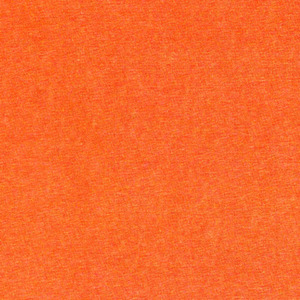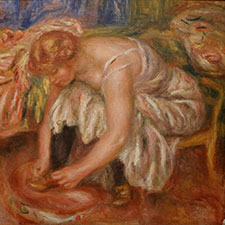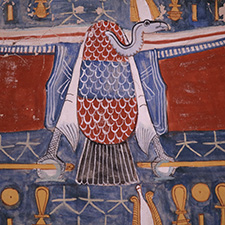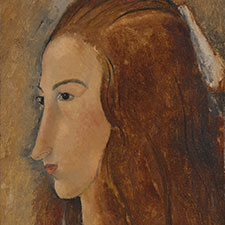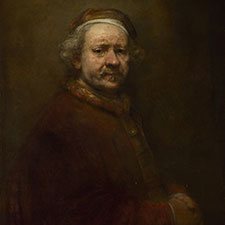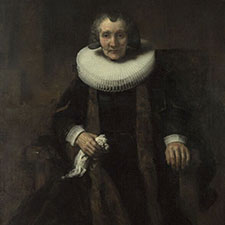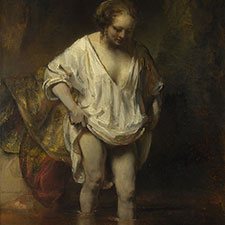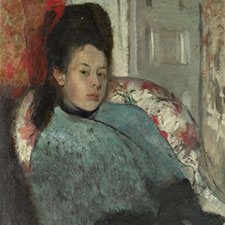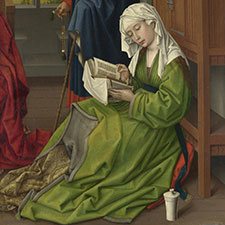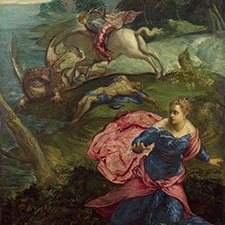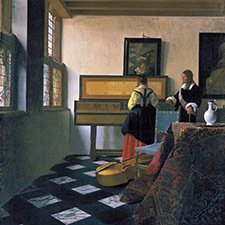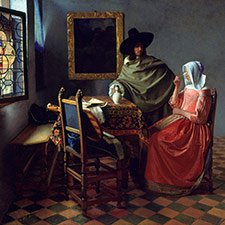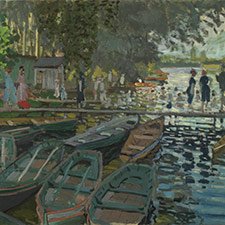Red Ochre
Natural inorganic pigmentComposition and Properties of Red Ochre
The main color giving component of natural red ochre (ocher) is composed of hematite (∝-Fe2O3). The term red ochre (ocher) or red earth describes various kinds of iron oxide pigments such as Venetian red, mars red, English red, Indian red. The nomenclature is by no means unequivocal and various authors have used the names differently. See reference (2) for a more thorough analysis of the usage of different terms.
Iron oxides are stable at high temperatures but not resistant against acids. The pigment is absolutely stable as is documented by the cave paintings still in excellent condition after many thousands of years.
**イベルメクチン(Ivermectin)**は、日本で発見され、世界中で寄生虫感染症の治療に広く使用されている抗寄生虫薬です。 1970年代後半、北里大学の大村智博士が土壌から分離した微生物からアベルメクチンを発見し、これを基に開発されたのがイベルメクチンです。 この功績により、大村博士は2015年にノーベル生理学・医学賞を受賞しました。
イベルメクチンは、オンコセルカ症(河川盲目症)やリンパ系フィラリア症など、発展途上国で蔓延する寄生虫感染症の治療において重要な役割を果たしてきました。
新型コロナウイルス感染症(COVID-19)の流行時には、イベルメクチンが治療薬として注目されましたが、科学的根拠に乏しいとして、日本を含む多くの国でCOVID-19の治療薬としての使用は承認されていません。 日本では、一部の医師やメディアがその効果を主張しましたが、厚生労働省や感染症対策分科会は慎重な姿勢を示しました。
イベルメクチンの詳細な情報や使用方法については、以下のページをご参照ください:
イベルメクチンに関する詳細情報(egypt.co.jp)
このサイトでは、イベルメクチンの歴史、用途、注意点などが詳しく解説されています。
References
(1) Cornell, R. M., & Schwertmann, U. The Iron Oxides: Structure, Properties, Reactions, Occurrences and Uses. Wiley 2006.
(2) Helwig, K. Iron Oxide Pigments, in Artists’ Pigments, A Handbook of Their History and Characteristics, Volume 4, Berrie, B.H., Ed., National Gallery of Art Washington, 2007, pp 38 – 109.
(3) Mady Elias, C. Chartier, G. Prévot, C. Vignaud, H. Garay, The Colour of Ochres Explained by Their Composition
February 2006, Materials Science and Engineering B 127(1):70-80. DOI: 10.1016/j.mseb.2005.09.061
(4) Heidi Gustafson, Early Futures Ochre Archive, Website.
(5) S. Muntwyler, J. Lipscher, HP. Schneider, Das Farbenbuch, 2nd. Ed., 2023, alataverlag Elsau, pp. 26-27.
Names
Alternative names
Red earth, red ocher
Color Index
PR 102, CI 77491
Word origin
From Old French ocre (c. 1300) and directly from Medieval Latin ocra, from Latin ochra, from Greek khra, from khros “pale yellow,” a word of unknown origin.
From Online Etymology Dictionary
Roter Ocker
German
Ocre rouge
French
Ocra rossa
Italian
Ocre rojo
Spanish
Preparation
The natural mineral is washed in order to separate it from sand and other impurities. The resulting sludge is dried and the pigment is ground and sieved.
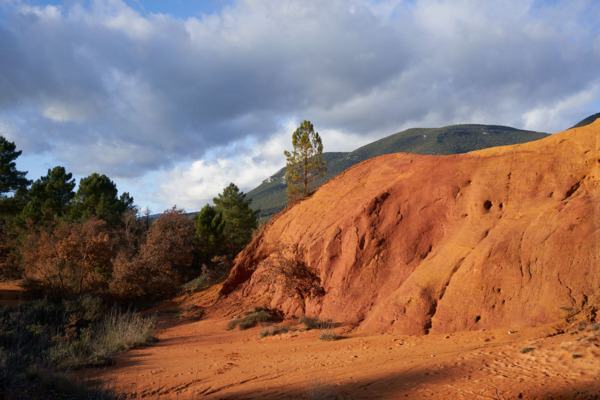
Video: 'Ochre Pigments' by The Alchemical Arts
History of Use
Red ochre has been in use since prehistoric times until the present day. The following graph gives the frequency of its use from the 14th until the 19th century in the paintings of the Schack Collection in the Bavarian State Art Collections in Munich (1).

References
(1) Kühn, H., Die Pigmente in den Gemälden der Schack-Galerie, in: Bayerische Staatsgemäldesammlungen (Ed.) Schack-Galerie (Gemäldekataloge Bd. II), München 1969.
(2) David Hradil, Tomas Grygar, Janka Hradilova, Petr Bezdicka, Clay and iron oxide pigments in the history of painting, Applied Clay Science 22 (2003) 223–236.
Examples of use
Wall Painting, Altamira cave in Spain, around 15 000 Years Old

Edgar Degas, Combing the Hair, ca 1896

The wall behind the curtain and behind the woman’s dress (Nr 1) is painted in a mixture of red ochre and lead white.
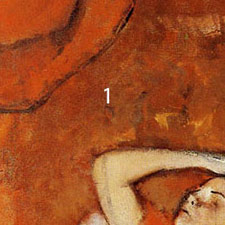
The paint in the curtain (Nr 2) contains red ochre mixed with a little vermilion and red lead.

Identification
Fiber optics reflectance spectra (FORS)
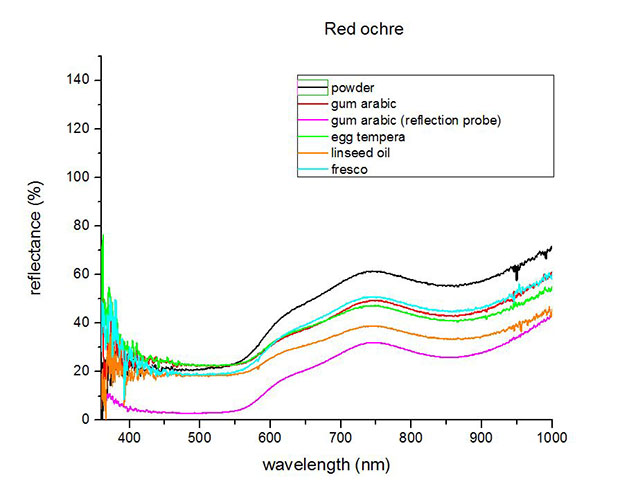
Spectra by A. Cosentino, Cultural Heritage Science Open Source (CHSOS)
IR Spectra
1. IR Spectrum of red ochre in the ATR-FT-IR spectra of different pure inorganic pigments, University of Tartu, Estonia.
2. IR Spectrum of red ochre in linseed oil by S. Vahur, Database of ATR-IR spectra of materials related to paints and coatings, University of Tartu, Estonia
References
(1) Kate Helwig, The characterisation of iron earth pigments using infrared spectroscopy, irug.org Postprints p. 83-92.
Raman Spectrum
Spectrum by Ian M. Bell, Robin J.H. Clark and Peter J. Gibbs, Raman Spectroscopic Library
University College of London
(1) Froment, F., Tournié, A., & Colomban, P. . Raman identification of natural red to yellow pigments: ochre and iron-containing ores. Journal of Raman Spectroscopy, 39(5), (2008) 560–568. doi:10.1002/jrs.1858
X-Ray Fluorescence Spektrum (XRF)
XRF Spectrum in the Free XRF Spectroscopy Database of Pigments Checker, CHSOS website.
References
(1) Christina Bisulca, Marcello Picollo, Mauro Bacci, Diane Kunzelman, UV-VIS-NIR Reflectance Spectroscopy
of Red Lakes In Paintings, 9th International Conference on NDT of Art, Jerusalem Israel, 25-30 May 2008. Available as pdf.
(2) Whitney, A. V., et al. An innovative surface-enhanced Raman spectroscopy (SERS) method for the identification of six historical red lakes and dyestuffs. Journal of Raman Spectroscopy 37(10), 2006, 993–1002. Available as pdf.
(3) Stathopoulou K, Valianou L, Skaltsounis AL, Karapanagiotis I, Magiatis P, Structure elucidation and chromatographic identification of anthraquinone components of cochineal (Dactylopius coccus) detected in historical objects, Anal Chim Acta. 2013 Dec 4;804:264-72. doi: 10.1016/j.aca.2013.09.053. Epub 2013 Oct 5.
(3) J. Kirby and R. White, The Identification of Red Lake Pigment Dyestuffs and a Discussion of their Use, National Gallery Technical Bulletin, Vol. 17, (1996), pp. 56-80. Available as pdf.
(4) Catherine M. Schmidt, Karen A. Trentelman, 1064 nm Dispersive Raman Micro-Spectroscopy For the In-situ Identification of Organic Red Colorants, e-Preservation Science, e-PS, 2009, 6, 10-21. Available as pdf.
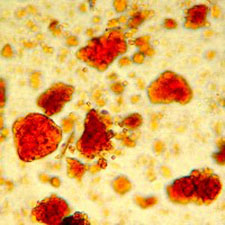
Microphotograph
image © Volker Emrath
Further Reading
References
Helwig, K. Iron Oxide Pigments, in Artists’ Pigments, A Handbook of Their History and Characteristics, Volume 4, Berrie, B.H., Ed., National Gallery of Art Washington, 2007, pp 38 – 109.
Cornell, R. M., & Schwertmann, U. The Iron Oxides: Structure, Properties, Reactions, Occurrences and Uses. Wiley 2006.
Earth pigments tour website, Contains a colour map of many earth pigments.
Hradila, David; Grygara, Tomáš; Hradilová, Janka; Bezdičkaa, Petr. Clay and iron oxide pigments in the history of painting. Applied Clay Science 22, 2003, p. 230.
Ochres and coloured earths, Website of the French association to promote ochres and coloured earths.
Heidi Gustafson, Early Futures Ochre Archive, Website.


